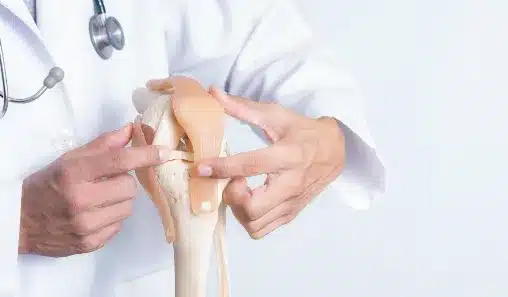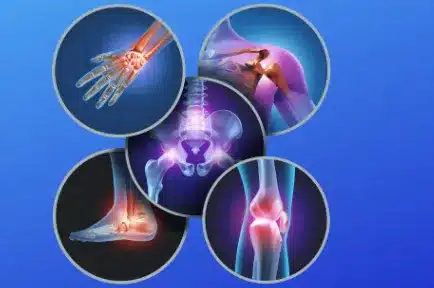Orthopedic treatments encompass a range of interventions aimed at addressing musculoskeletal disorders, which affect the body’s bones, muscles, ligaments, and tendons. From joint replacement surgeries to fracture management techniques, these treatments aim to restore function, alleviate pain, and enhance mobility for individuals suffering from orthopedic conditions. With advancements in surgical techniques and rehabilitation protocols, orthopedic treatments play a pivotal role in improving the quality of life for patients facing musculoskeletal challenges.
What is Orthopedic?
The history of Orthopedic treatments dates back to ancient times, with early civilizations developing various techniques and practices to treat bone and joint injuries. The Edwin Smith Papyrus, an ancient Egyptian text from around 1600 BCE, contains descriptions of orthopedic treatments for fractures and dislocations. Orthopedics is a branch of medicine that focuses on the musculoskeletal system, which includes bones, joints, muscles, ligaments, tendons, and nerves.
Orthopedic specialists, known as orthopedic surgeons or orthopedists, are highly trained medical professionals who diagnose, treat, and manage various conditions affecting the musculoskeletal system. These conditions can range from minor injuries and degenerative diseases to complex fractures and congenital disorders.
Clinic contact number: +989371200167
Types of Orthopedic Surgeries
Orthopedic treatments encompass various procedures, each designed to address specific musculoskeletal conditions. Some common types of orthopedic surgeries include:
Joint Replacement Surgeries
This procedure involves replacing damaged or arthritic joints, such as the hip or knee, with artificial implants to restore function and alleviate pain.
Total Knee Replacement (TKR)
This surgery involves replacing a damaged knee joint with an artificial implant to relieve pain and improve function, often due to osteoarthritis or injury.
Total Hip Replacement (THR)
Involves replacing a damaged hip joint with an artificial implant, typically due to osteoarthritis, rheumatoid arthritis, or fractures.
Total Shoulder Replacement (TSR)
Replacement of the shoulder joint with a prosthetic implant, commonly performed for severe shoulder arthritis or fractures.

Spine Surgeries
- Discectomy: Removal of a herniated or damaged disc in the spine that is causing nerve compression and pain.
- Spinal Fusion: Joining two or more vertebrae together to stabilize the spine and reduce pain caused by conditions like spinal instability or degenerative disc disease.
- Laminectomy: Surgical removal of part of the vertebral bone (lamina) to relieve pressure on the spinal cord or nerves.
- Microdiscectomy: Minimally invasive procedure to remove a small portion of a herniated disc pressing on a nerve root.
Sports Medicine Surgeries
- ACL Reconstruction: Surgical repair or reconstruction of the anterior cruciate ligament (ACL) in the knee, often done after sports-related injuries.
- Meniscus Repair or Removal: Surgical treatment for torn meniscus cartilage in the knee joint.
- Rotator Cuff Repair: Surgical repair of torn tendons in the shoulder joint, common in athletes and active individuals.
- Labral Repair: Surgery to repair a torn labrum in the shoulder or hip joint, often seen in athletes with repetitive overuse injuries.
Fracture Repair Surgeries
- Open Reduction and Internal Fixation (ORIF): Surgical realignment and stabilization of fractured bones using plates, screws, or rods.
- Closed Reduction with Casting: Non-surgical realignment followed by immobilization in a cast for bone healing.
- External Fixation: Temporary stabilization of fractures using external frames or devices until healing occurs.
- Intramedullary Nailing: Surgical insertion of a metal rod into the bone to stabilize fractures, commonly used for long bone fractures.
Orthopedic Treatments
In addition to surgeries, orthopedic treatments encompass a range of non-surgical interventions aimed at managing musculoskeletal conditions. These treatments can include:
- Medication: Orthopedic treatment specialists may prescribe pain relievers, anti-inflammatory drugs, or disease-modifying drugs to manage pain, reduce inflammation, or slow down the progression of conditions like arthritis.
- Physical Therapy: Physical therapists work closely with orthopedic patients to develop personalized exercise programs that help improve strength, flexibility, and mobility. Physical therapy can also aid in post-surgical rehabilitation.
- Bracing and Support: Orthopedic treatments, braces, splints, or orthotics may be prescribed to provide support, stability, or alignment to injured or weakened joints.
- Injections: Corticosteroid or viscosupplementation injections, such as hyaluronic acid, can reduce inflammation, relieve pain, or improve joint lubrication.
- Lifestyle Modifications: Orthopedic specialists may guide lifestyle changes, including weight management, ergonomic modifications, or activity modification, to reduce strain on the musculoskeletal system.

Most Common Orthopedic Surgeries
While the scope of orthopedic surgeries is vast, some of the most common procedures performed include:
- Total Joint Replacement: This surgery is often performed for patients with severe joint damage or arthritis, primarily in the hips and knees. The damaged joint surfaces are replaced with prosthetic implants.
- Arthroscopic Meniscectomy: It involves the removal of torn meniscal cartilage in the knee joint to alleviate pain and restore function.
- Rotator Cuff Repair: This surgery aims to reattach or repair the torn tendons in the shoulder’s rotator cuff, restoring stability and strength.
- ACL Reconstruction: Anterior cruciate ligament (ACL) reconstruction is performed to restore stability to the knee after ACL tears or ruptures.
- Spinal Fusion: This procedure involves joining two or more vertebrae to stabilize the spine, often performed for conditions like degenerative disc disease or spinal fractures.
Clinic contact number: +989371200167
Types of Orthopedic Practices
Orthopedic practices can be classified into various subspecialties, allowing orthopedic surgeons to focus on specific areas of expertise. Some common subspecialties within orthopedics include:
- Sports Medicine: Orthopedists specialize in treating and preventing sports-related injuries, working closely with athletes to optimize performance and facilitate a safe return to sports activities.
- Pediatric Orthopedics: Pediatric orthopedic surgeons specialize in diagnosing and treating musculoskeletal conditions in children, including congenital deformities, growth plate injuries, or scoliosis.
- Orthopedic Oncology: Orthopedic oncologists focus on diagnosing and treating bone and soft tissue tumors, employing surgical and non-surgical approaches to manage cancerous and benign tumors.
- Hand and Upper Extremity: Orthopedic surgeons specializing in hand and upper extremity conditions treat disorders affecting the hands, wrists, elbows, and shoulders, including fractures, nerve compression syndromes, or tendon injuries.
Types of Orthopedic treatments Practices
Orthopedic treatment practices can be classified into various subspecialties, allowing orthopedic surgeons to focus on specific areas of expertise. Some common subspecialties within orthopedics include:
Sports Medicine
Pediatric Orthopedics
Orthopedic Oncology
Hand and Upper Extremities

Once board certified, an orthopedic surgeon must renew their certification every 10 years by completing continuing education courses as well as exams.Health line
Benefits of Orthopedic Surgeries
Orthopedic treatments offer numerous benefits to patients, including:
- Pain Relief: Orthopedic surgeries can effectively alleviate chronic pain caused by musculoskeletal conditions, allowing patients to regain mobility and improve their quality of life.
- Improved Functionality: By correcting structural abnormalities or replacing damaged joints, orthopedic surgeries can restore lost functionality, enabling patients to perform daily activities and engage in physical exercise.
- Enhanced Quality of Life: Orthopedic treatments can significantly improve the overall quality of life for individuals suffering from debilitating musculoskeletal conditions, reducing pain and improving mobility.
- Increased Independence: Restoring mobility and function through orthopedic surgeries enables patients to regain independence in daily tasks and reduces reliance on assistive devices or support.
- Long-Term Results: Many Orthopedic treatments provide long-term or permanent solutions to musculoskeletal problems, allowing patients to enjoy the benefits of improved function and pain relief for years to come.
Leading Figures in Orthopedic Medicine
In the field of orthopedic treatments, prominent universities such as Harvard Medical School and Oxford University stand out for their advanced research in biomechanics and minimally invasive surgical technologies. Renowned specialists, such as Professor Michael J. Yaremchuk, have significantly contributed to the development of modern reconstructive surgery techniques and prosthetics. These studies are supported by state-of-the-art equipment and laboratories, enabling complex surgeries on joints and bones with high precision and reduced risks for patients.
Mayo Clinic is one of the most active organizations in orthopedic treatments, offering a wide range of services for the restoration of musculoskeletal functions and specializing in procedures like arthroscopy, osteotomy, and joint replacement. Recent statistics show a significant increase in the number of successful surgeries on knee and hip joints, with about 95% of patients reporting improved quality of life following joint replacement surgeries. These results affirm the high efficacy and safety of modern orthopedic practices and technologies implemented by leading medical centers.
Summary
Orthopedic treatments offer a comprehensive approach to managing musculoskeletal disorders, catering to a diverse range of conditions affecting bones, joints, muscles, and connective tissues. Whether through joint replacement procedures to alleviate arthritis-related pain, spine surgeries to address herniated discs and spinal deformities, or the use of orthotic devices to support proper alignment and function, these interventions aim to restore mobility and enhance the overall quality of life for patients. Additionally, tendon repair techniques play a crucial role in restoring strength and functionality to injured tendons, enabling individuals to regain optimal movement and function in affected areas.
In conclusion, orthopedic treatments represent a cornerstone of modern healthcare, providing effective solutions for a multitude of musculoskeletal conditions. Through advancements in surgical techniques, rehabilitation protocols, and the development of innovative orthotic devices, orthopedic specialists continue to offer tailored approaches to address the unique needs of each patient, promoting recovery and enabling individuals to lead active and fulfilling lives despite musculoskeletal challenges.

Did you know? Athletes, especially those with frequent sports injuries, often rely on orthopedic treatments to stay in top form. It’s not just about orthopedic surgery or physical therapy! They also focus on bone health nutrition, ensuring their diet is rich in calcium and vitamin D.
Many also use orthopedic devices & braces for added support during high-intensity routines. And here’s an unexpected twist: ergonomics plays a significant role too! Proper posture and ergonomically designed training equipment can make all the difference in preventing injuries.
So, next time you see an athlete in peak performance, remember there’s a world of science and care backing them up.
Clinic contact number: +989371200167
FAQs
- How long does it take to recover from orthopedic surgery?
Recovery times vary depending on the type and complexity of the surgery and individual factors. Some orthopedic surgeries may require a few weeks to months for complete recovery and rehabilitation.
2. Are all orthopedic surgeries performed under general anesthesia?
No, not all orthopedic surgeries require general anesthesia. The type of anesthesia used depends on the specific procedure, the patient’s health condition, and the surgeon’s preference.
3. What conditions do orthopedic surgeons treat?
Orthopedic surgeons treat a wide range of conditions, including fractures, sports injuries, arthritis, osteoporosis, spinal disorders, joint replacements, ligament and tendon injuries, congenital disorders, and more.
4. How are orthopedic conditions diagnosed?
Diagnosis typically involves a physical examination, medical history review, and imaging tests such as X-rays, MRIs, or CT scans. In some cases, diagnostic injections or blood tests may also be used.
5. What are common orthopedic treatments?
Common treatments include medications (pain relievers, anti-inflammatories), physical therapy, orthotics, braces, casts, minimally invasive procedures (arthroscopy), joint injections (corticosteroids or hyaluronic acid), and surgical interventions (such as joint replacement or fracture repair).
What Is an Orthopedic Doctor? What Do They Do? (healthline.com)



